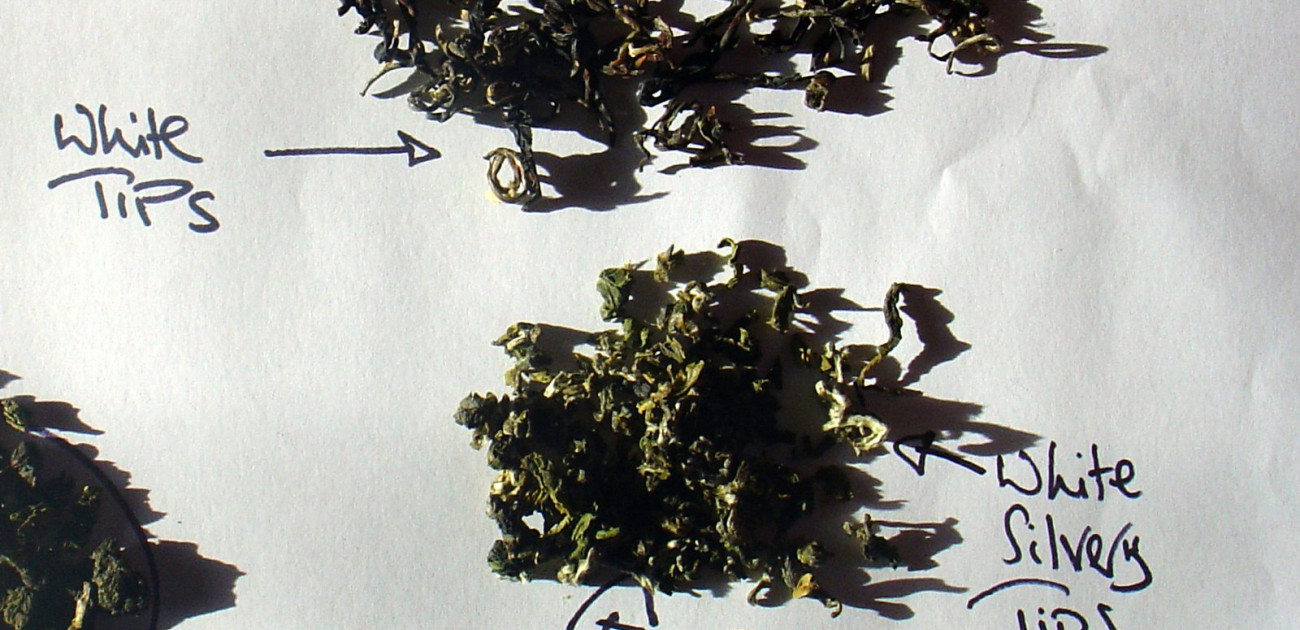11 March 2010
Enjoying Tasting Oolong Tea

Today it's a sunny day with a warming, clear fresh light and a blue sky. This is great weather to look at tasting oolong teas from China and Taiwan (sometimes called Formosa by tea drinkers). The clear light allows you to see the subtle colour differences between types of teas being cupped, while the fresh light air marries really well with the taste of oolongs. Oolong tea is sometimes called wu long which is perhaps a better transliteration.
Oolong tea is called a semi-fermented tea, where green tea is basically unfermented (or lightly processed) while black tea is fermented (i.e. fully processed). Oolong tea sits somewhere between a green tea and a black tea with exactly where they are in that green-to-black tea range having a lot of effect on the end tea.
Oolong tea has the smooth, light and refreshing characteristics of green tea with some of the additional depth of character provided by the firing process to give it hints of black tea - so you will hear people talk of oolong tea being "sweet" or "refreshing" or "flowery" or that it has hints of "spiciness", "warmth" and a "light flavour of heat coming through".
The tea leaves are picked from a special type of tea plant with large leaves, which are then withered and allowed to oxidize in carefully controlled air conditioned rooms. When ready (and this is part of the art of the tea maker), the leaves are steamed at a high heat to stop the oxidation process.
I just love them. For me, they have more character than green tea and white tea and are like a premier cru wine from a really small, specialist wine estate that's been given extra love, care and attention. Or perhaps they are like the mystery of a Rembrandt or Titian painting over the perfectly clean lines of a Raphael. They are darker than green teas in colour but still often have silvery white tips coming through.

I have gone for the following types - an everyday Chinese Oolong Tea and a Taiwan Baihao Oolong (or Bai Hao Oolong) and two flavoured Oolong Teas . So I have chosen a classic style China Osmanthus Oolong Tea that's been flavoured with delicate Osmanthus blossoms, and a China Milky Oolong Tea that has a silky, milky, sweet taste that's weird - but beguiling - and has a round mouthfeel.
The Baihao Oolong tea comes from Xinhui in Northern Taiwan, which is humid and wet compared to the rest of the country. This creates an oolong that's really smooth and sweet, with almost no astringency, with a lovely flowery aroma of ripe peaches and sweet magnolia-flavoured honey. Bai Hao Oolong is sometimes known as
Dong Fang Mei Ren or Oriental Beauty Oolong Tea because Queen Elizabeth II loves the special aroma and taste of Bai Hao and so she named it "Oriental Beauty".
As you can see from the picture below it has a redder, darker and fuller colour than the green teas that I tasted a couple of days ago. However, this does not translate into a bitter drink and it should be drunk fresh and without milk, sugar or lemon. And while it costs a bit more than normal teas, it is really a treat for when you're in a quiet, contemplative mood plus it brews well a second time on the same leaves - in fact I often prefer the second brew to the first as more character comes through.





